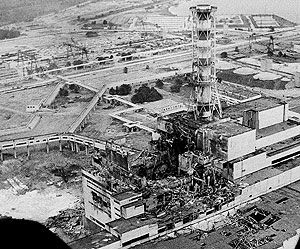ACTUALITE INTERNATIONALE
2008
février
How much radiation is safe?
http://www.economist.com
ADIT
| "TAKE baths in liquid sunshine.
It is radio-active, germicidal and purifies your blood by destroying disease
germs, thereby revivifying, rejuvenating and increasing your Vital Force
and circulation." So runs an advertisement for the Radium Sulphur Springs
in Colegrove, Los Angeles, displayed in the January 5th 1908 issue of the
Los
Angeles Times.
Back then, radioactivity was new, poorly understood and a hot marketing property. Besides health spas, there were "radium condoms" (radium, a chemical element, was the focus of much early research into radioactivity), "uranium ice-cream" and "Tho-Radia," a brand of beauty cream advertised with an illustration of a woman bathed in an unearthly orange glow. 
How many dead? With the benefit of hindsight and a hundred
years of scientific advance, such advertisements are at once shocking and
darkly amusing. These days, the word "radioactive" is one of the most feared
in the English language. Every schoolchild studying radiation learns the
salutary lesson of Marie Curie, the brilliant French scientist whose unprotected
handling of countless radioactive samples led to the bone-marrow disease
that killed her. Even today, her notebooks are supposedly too contaminated
to be handled without protection. That, in modern minds, is how radiation
works—it is invisible, deadly and anything it touches tainted forever.
|
The result - that no level of radiation could be considered safe, and
that health risks increased linearly with exposure - was adopted as the
official model, and remains the dominant theory today.
But not everyone is sure that it works. In 2005 The World Health Organisation (WHO) published a report into the aftermath of the 1986 Chernobyl meltdown in Ukraine. Although the explosion released more radioactivity than the Hiroshima bomb, the average exposure was much lower. In contrast to predictions made at the time that tens of thousands of people could die, the WHO put the death toll at the time of the report at less than 50. Nor did the WHO find much evidence of increased rates of fertility problems or malformed children as a result of the accident. Its revised estimates predicted an eventual total of around 9,000 deaths—still a tragedy, although much smaller than first feared. Indeed, the scientists argued that the fall in the quality of health care resulting from the collapse of the Soviet Union had likely done far more harm to the citizens of Belarus, Ukraine and Russia than the nuclear meltdown. The report was instantly controversial. A Green member of the European Parliament commissioned an alternative report that put the figure for eventual cancer deaths at 30,000 to 60,000; and a report from Greenpeace made the gloomiest assumptions possible to arrive at a toll of around 90,000 people. Such disagreements are of interest to more than just epidemiologists and the residents of eastern Europe (although the WHO pointed out that anxiety and depression among irradiated locals was a significant public-health problem in itself). Everyone on the planet is constantly exposed to low levels of background radiation, mostly from naturally-occurring radon gas. Doses vary widely from place to place, from a global average of around 3 milliSieverts (mSv) a year (mostly from exposure to radon, a naturally-occurring gas) up to 260 mSv in Ramsar, an Iranian town whose streams contain large quantities of naturally occurring radium. Deciding just how dangerous radiation really is would improve public health all over the world. It might have other effects, too. If the public's fear of radiation turned out to be overblown, it could help soften opposition to nuclear power (the nuclear industry, naturally, is keen to play down the risks at every opportunity). It might help to quell the panic about terrorists using dirty bombs—conventional explosive devices designed to spread radioactive particles across a wide area. Despite much fearful media attention, virtually every scientist who has considered the idea is adamant that the risk is overplayed and that most of the deaths would be the result of the initial, conventional explosion. Once lauded as a cure-all, has radiation's reputation swung too far in the other direction? |